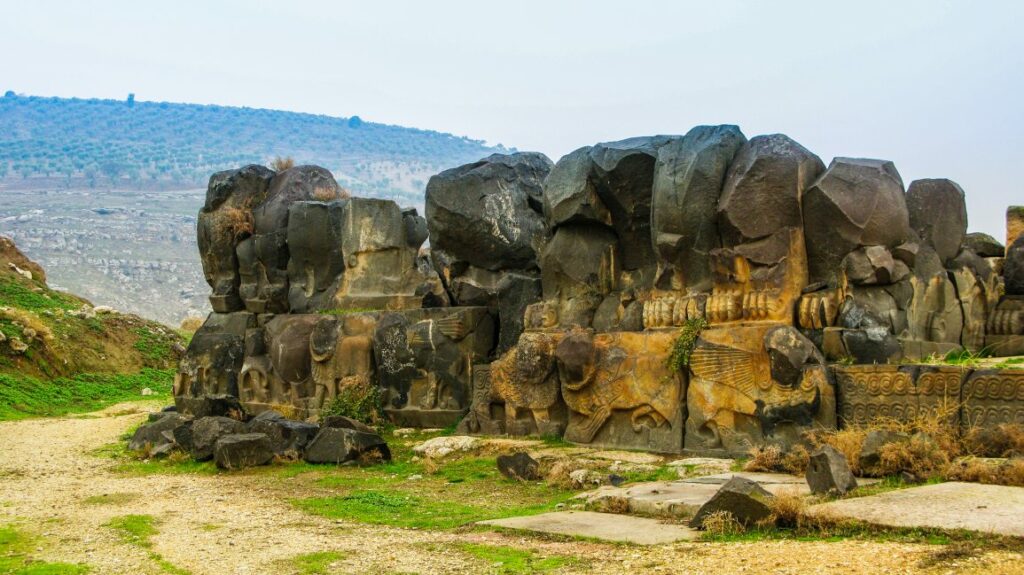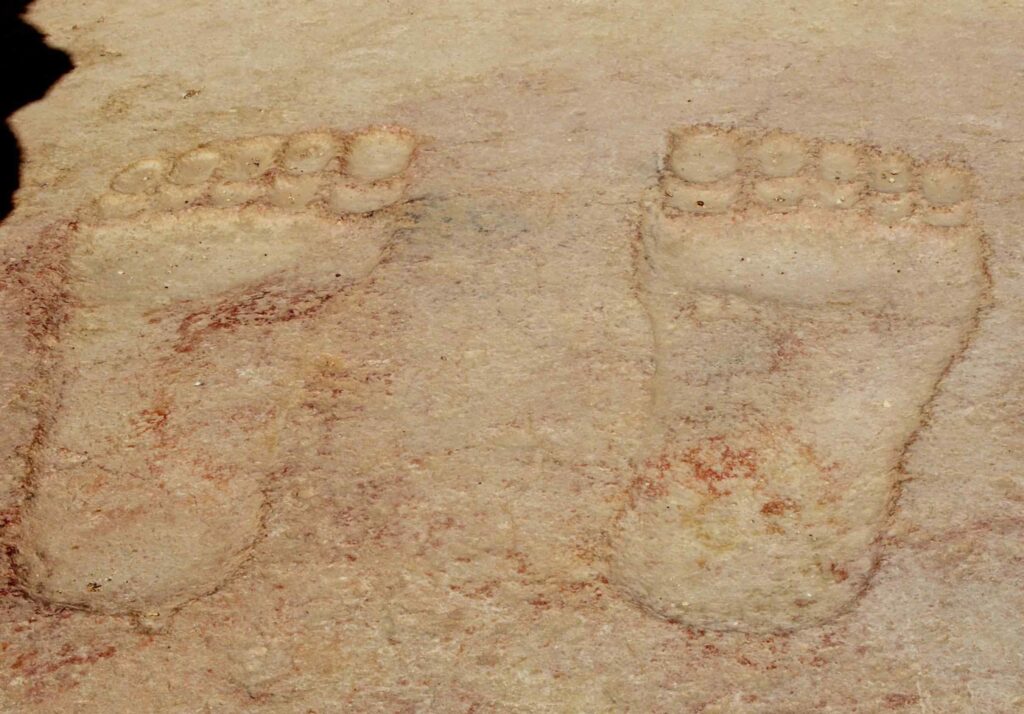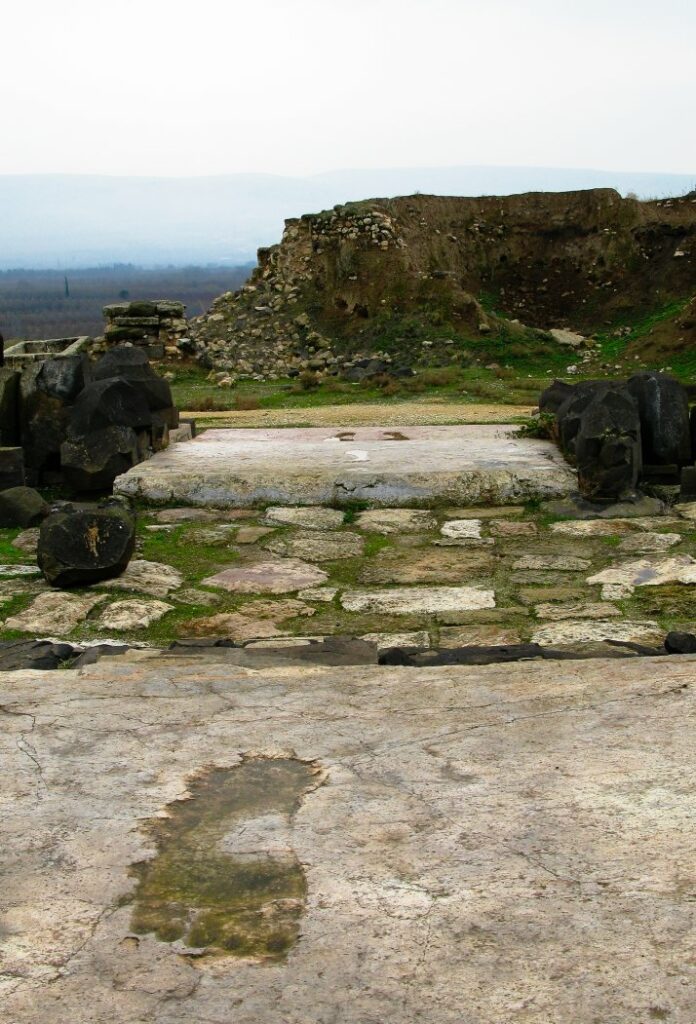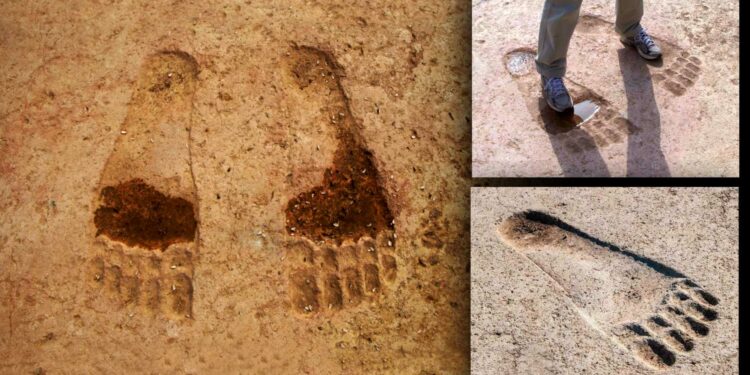A little historical town named “Ain Dara” is northwest of Aleppo, Syria. It contains a magnificent historical monument, the Ain Dara Temple, located just west of the settlement.
Outside the Ain Dara shrine entrance, there lies an extraordinary historical imprint: a pair of massive footprints. It is still unknown who produced them or why they were carved in this manner.

Between 1980 and 1985, the Iron-Age temple was excavated and analyzed meticulously, and it has been likened to King Solomon’s Temple several times.
According to Bible History Daily, the astonishing parallels between the ‘Ain Dara temple and the temple represented in the Bible are rather extraordinary. Both monuments were built on gigantic artificial platforms built at the highest elevations of their respective towns.
The architecture of the buildings is similar, with a three-part structure: an entrance porch supported by two columns, the main sanctuary hall (the hall of the ‘Ain Dara temple is divided into an antechamber and the main chamber), and an elevated shrine known as the Holy of Holies hidden behind a partition.

On three sides, on either side of the main structure, they were flanked by a succession of multistory halls and rooms that served a variety of tasks.
Even though the Ain Dara temple has numerous similarities to King Solomon’s temple, they seem unlikely to be the same tower. According to the excavator Ali Abu Assaf, the Ain Dara temple was erected approximately 1300 BC and lasted for 550 years, from 740 BC to 1300 BC.
Archaeologists are still unsure which god was worshiped at the temple or to whom it was dedicated. Several academics believe it was constructed as a temple to Ishtar, a fertility goddess. Others think that the shrine was owned by the goddess Astarte. Another school of thought holds that Baal Hadad’s divinity owned the temple.
Some structural components of the temple, such as the limestone foundations and basalt slabs, have been meticulously preserved over the years. The structure previously had mudbrick walls covered in wood paneling, but that feature has been unfortunately lost to history.
The external and interior walls of the tower are adorned with several skillfully carved reliefs depicting lions, cherubim, and other mythological creatures, mountain gods, palmettes, and complex geometric designs.
The entrance to the Ain Dara shrine is guarded by a pair of massive sculpted footprints that stand at the doorway. They are around one meter long and face the inside of the temple.
Like Solomon’s Temple, the ‘Ain Dara temple was reached by a flagstone-paved courtyard. The left footprint had been imprinted on the flagstone, indicating the god’s entrance inside the temple. The correct impression was inscribed in the cella’s threshold, indicating that the vast deity only needed two steps to enter the temple.

Researchers are perplexed as to why they were etched and what purpose they served. Some scientists believe that footprints might be built to invoke the presence of the gods, acting as a type of iconic picture of the deity. Even though this is not a literal pair of giant footprints, the carving is genuine, and it demonstrates that our forebears were familiar with and seen things of immense size.
Mesopotamia is well-known for being the cradle of civilization and the source of one of the world’s most extensive mythical narratives. Thus bizarre and baffling findings such as the giant footprints are anticipated in the region.
The surrounding mythology implies a time when giants, demigods, and gods walked the Earth, leaving their imprint. According to tradition, the Anunnaki arrived on Earth thousands of years ago from another planet and irrevocably transformed our culture.























